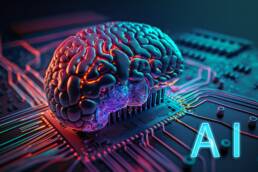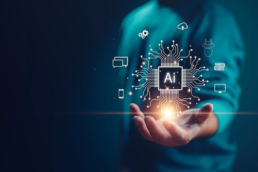Generative AI is a rapidly evolving field that has the potential to revolutionize the way we create art, music, literature, and other forms of creative expression, as well as solve complex problems in a variety of fields. By leveraging the power of machine learning, generative AI models can learn from vast datasets of existing creative works and real-world data to produce novel and original creations, as well as generate synthetic data that can be used to train other machine learning models and create new products and services.
One of the most exciting aspects of generative AI is its ability to democratize creativity and make problem-solving more accessible. By making it possible for people to create creative works and solve complex problems without the need for specialized skills or training, generative AI can help to unlock the creative potential and problem-solving abilities of everyone.
Creative Applications of Generative AI
Generative AI is already being used to create a wide range of creative works, including:
- Art: Generative AI models have been used to create stunning works of art, including photorealistic images, paintings, sculptures, and even interactive art installations. For example, the AI artist Robbie Barrat has used generative AI to create hyperrealistic portraits of celebrities and fictional characters, while the AI art collective Refik Anadol has used generative AI to create immersive data-driven art installations that explore the relationship between humans and machines.
- Music: Generative AI models have been used to compose music in a variety of styles, from classical to pop to hip hop. For example, the AI music composition tool Jukebox can generate music in a wide range of styles, while the AI music producer AIVA can compose and produce music for films, TV shows, and video games.
- Literature: Generative AI models have been used to write poems, stories, and even entire novels. For example, the AI-powered writing assistant Bard can generate text, translate languages, write different kinds of creative content, and answer your questions in an informative way, while the AI novel-writing tool GPT-Neo can generate realistic and engaging text for novels, scripts, and other creative works.
Practical Applications of Generative AI
In addition to its creative potential, generative AI also has a number of practical applications. For example, generative AI models can be used to:
- Generate data for training other machine learning models: Generative AI models can be used to generate synthetic data that can be used to train other machine learning models. This can be useful for situations where it is difficult or impossible to obtain real-world data. For example, generative AI models have been used to generate synthetic medical images for training medical imaging algorithms and synthetic financial data for training financial trading algorithms.
- Create new products and services: Generative AI models can be used to create new products and services, such as personalized recommendations, targeted advertising, and new forms of entertainment. For example, generative AI models are being used to develop personalized recommendation systems for e-commerce platforms, to create targeted advertising campaigns for marketing agencies, and to develop new forms of interactive entertainment, such as video games and virtual worlds.
- Solve complex problems: Generative AI models can be used to solve complex problems in a variety of fields, such as drug discovery, materials science, and financial modeling. For example, generative AI models are being used to design new drugs, develop new materials with desired properties, and create new financial trading strategies.
The Future of Generative AI
Generative AI is a powerful tool that has the potential to revolutionize many aspects of our lives. As we continue to explore the capabilities of this technology, we can expect to see it have a profound impact on the way we create, work, and live.
Here are a few ways that generative AI is likely to impact the future:
- Personalized experiences: Generative AI can be used to create personalized experiences for individuals in all aspects of life, from the arts and entertainment to education and healthcare. For example, generative AI could be used to create personalized educational content tailored to the individual needs of each student, or to develop personalized treatment plans for patients based on their individual medical history and genetic makeup.
- New forms of art and entertainment: Generative AI is already being used to create new forms of art and entertainment, such as interactive art installations, virtual worlds, and personalized video games. As generative AI technology continues to develop, we can expect to see even more innovative and immersive forms of art and entertainment emerge.
- Collaboration between humans and AI: Generative AI can be used to augment and amplify human creativity and problem-solving abilities. For example, generative AI models could be used to generate new ideas for artists and designers, or to help scientists and engineers solve complex problems.
Generative AI is a rapidly evolving field with the potential to transform many aspects of our world.




